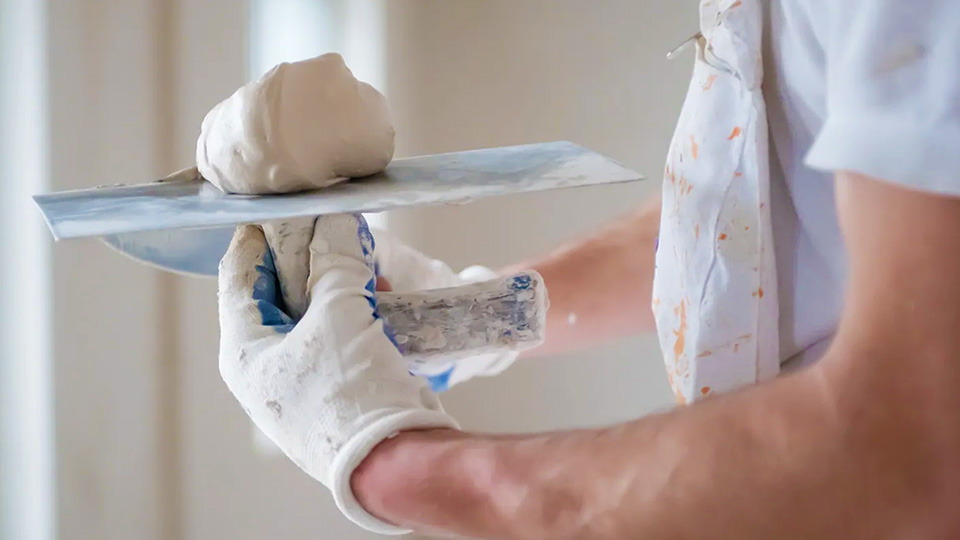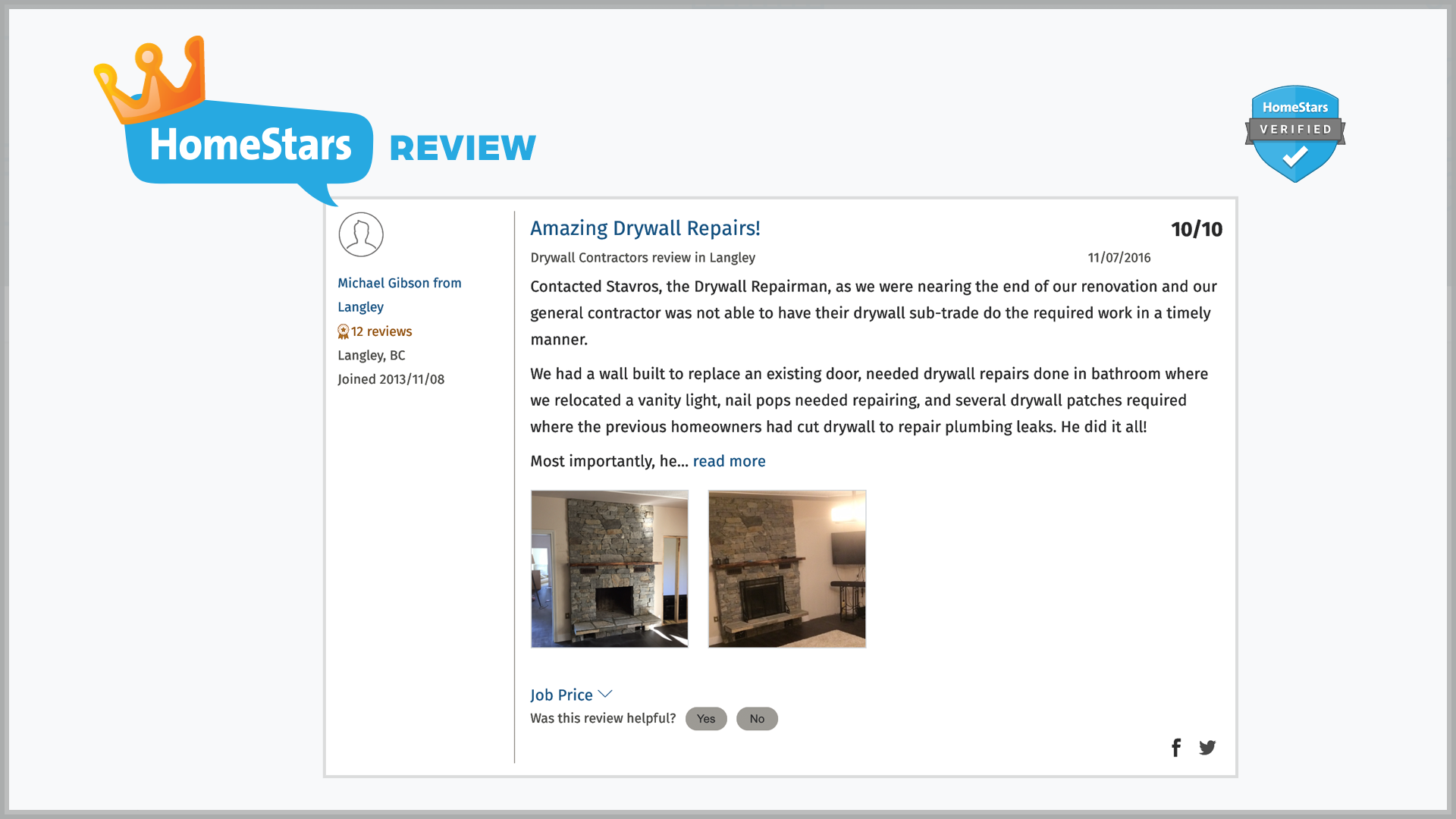Need Drywall Repair in Vancouver to Abbotsford – Click Here >
Popcorn Ceiling Repair and Repainting >
Ceiling Texture Removal and Repair >
Textured Ceiling Crack Repair >
The Ultimate Guide to Textured Ceilings in Vancouver, BC
How Much Does It Cost to Repair Drywall Ceiling Texture?
The cost to repair drywall ceiling texture in Vancouver varies based on the extent of the damage and the type of texture. On average, repairs can range from $200 to $500 for small areas. Larger repairs or complete retexturing can cost upwards of $1,000 to $2,500.

Can a Textured Ceiling Be Repaired?
Yes, a textured ceiling can be repaired. Small cracks and holes can be patched and retextured to match the existing ceiling. For extensive damage, it may be necessary to retexture the entire ceiling for a uniform appearance.

Can I Paint Over a Textured Ceiling?
Painting over a textured ceiling is possible and often done to refresh the look. Ensure the surface is clean and free of dust before painting.

How Much Does It Cost to Remove Textured Ceiling Paint?
The cost to remove textured ceiling paint can vary, typically ranging from $1 to $3 per square foot. For a 12×12 room, this translates to approximately $150 to $450.

Is It Worth Removing Textured Ceiling?
Removing a textured ceiling can increase a home’s value and modernize its appearance. It can be worth the investment, especially if the texture is outdated or damaged.
What is the Cheapest Way to Cover a Textured Ceiling?
The cheapest way to cover a textured ceiling is to apply a new layer of drywall or use ceiling tiles. Both options are cost-effective and can provide a smooth finish.
Do You Sand a Textured Ceiling Before Painting?
Sanding a textured ceiling before painting is not typically necessary unless the texture is loose or flaky. In most cases, a good cleaning and priming are sufficient.
Do You Need to Prime a Textured Ceiling Before Painting?
Yes, priming a textured ceiling before painting helps ensure better adhesion and coverage. Use a high-quality primer suitable for textured surfaces.
What Kind of Paint Do You Use on a Textured Ceiling?
Use a flat or matte paint for textured ceilings to minimize the appearance of imperfections. Choose a paint designed for ceilings for the best results.
How Do You Repair a Drywall Hole in a Textured Ceiling?
To repair a drywall hole in a textured ceiling:
- Patch the hole with a drywall patch.
- Apply joint compound and smooth it out.
- Match the existing texture using a texture spray or brush.
- Allow it to dry, then prime and paint.
How to Redo a Textured Ceiling?
Redoing a textured ceiling involves removing the old texture, repairing any damage, applying a new texture, and then painting. This can be a DIY project or done by professionals.
How to Repair Textured Drywall?
To repair textured drywall:
- Clean the damaged area.
- Apply a patch if needed.
- Use joint compound to fill in cracks or holes.
- Reapply the texture to match the surrounding area.
- Prime and paint if necessary.
How Much Does It Cost to Paint a Textured Ceiling?
Painting a textured ceiling costs between $1 to $2 per square foot. For a 12×12 room, expect to pay around $150 to $300.
How Much Does It Cost to Have Someone Texture a Ceiling?
Having a professional texture a ceiling can cost between $1 to $3 per square foot, depending on the complexity of the texture.
How Much Does It Cost to Remove Texture from Drywall?
Removing texture from drywall typically costs between $1 to $3 per square foot. For a 12×12 room, this can amount to $150 to $450.
Can You Paint Over Drywall Texture?
Yes, you can paint over drywall texture. Ensure the texture is clean and prime it before painting for the best results.
How Much Does It Cost to Scrape and Texture a Ceiling?
Scraping and retexturing a ceiling costs between $2 to $5 per square foot. For a 12×12 room, this can range from $300 to $900.
Can You Smooth Out Textured Drywall?
Yes, you can smooth out textured drywall by applying a skim coat of joint compound and sanding it down to a smooth finish.
Do People Still Texture Ceilings?
Textured ceilings are less popular now, but some homeowners still prefer them for their aesthetic appeal and ability to hide imperfections.
Can You Texture a Ceiling Yourself?
Yes, texturing a ceiling can be a DIY project. Use a texture sprayer or a texture brush/roller to achieve the desired finish.
How Much Does It Cost to Paint a 12×12 Ceiling?
Painting a 12×12 ceiling typically costs between $150 to $300, depending on the complexity and type of paint used.
What is the Most Popular Ceiling Texture?
The most popular ceiling texture is the “knockdown” texture, which provides a subtle, modern look while hiding imperfections.
What is the Best Color to Paint a Textured Ceiling?
White is the most popular color for textured ceilings as it reflects light well and makes the room feel larger and brighter.
How Long Does a Textured Ceiling Last?
A well-maintained textured ceiling can last for decades. Regular cleaning and occasional touch-ups can help extend its lifespan.
Can You Change the Texture of Drywall?
Yes, the texture of drywall can be changed by removing the old texture and applying a new one. This can update the look of the room.
How to Fix Cracks in Drywall with Texture?
To fix cracks in textured drywall:
- Clean the crack.
- Apply joint compound to fill the crack.
- Match the existing texture using a texture spray or brush.
- Prime and paint as needed.
Can You Retexture Drywall?
Yes, drywall can be retextured by applying a new layer of joint compound and creating the desired texture.
What is the Difference Between a Popcorn Ceiling and a Textured Ceiling?
A popcorn ceiling has a bumpy, cottage cheese-like appearance, while a textured ceiling can have various patterns such as knockdown, orange peel, or swirl.
Does Removing Textured Ceiling Increase Home Value?
Yes, removing a textured ceiling can increase home value, particularly if the texture is outdated or unappealing to potential buyers.
How Much Does It Cost to Remove Popcorn Ceiling and Paint?
Removing popcorn ceiling and painting can cost between $2 to $5 per square foot. For a 12×12 room, this can range from $300 to $900.
Can a Drywall Ceiling Be Patched?
Yes, a drywall ceiling can be patched. Small holes and cracks can be repaired with joint compound, while larger areas may require drywall patches.
How to Fix Crack in Ceiling with Texture?
To fix a crack in a textured ceiling:
- Clean the crack.
- Apply joint compound to fill the crack.
- Reapply the texture to match the surrounding area.
- Prime and paint as needed.
How to Repair a Stipple Ceiling?
To repair a stipple ceiling:
- Patch any holes or cracks with joint compound.
- Use a stipple brush or roller to reapply the stipple texture.
- Allow to dry, then prime and paint.
Can You Paint a Textured Ceiling with a Roller?
Yes, you can paint a textured ceiling with a roller. Use a thick-nap roller to ensure even coverage.
Do You Paint Ceiling or Wall First?
It’s generally recommended to paint the ceiling first and then the walls to avoid drips and splatters on freshly painted surfaces.
What is the Best Way to Texture a Ceiling?
The best way to texture a ceiling is to use a texture sprayer for even coverage or a texture brush/roller for specific patterns.
Do You Paint Textured Ceilings with a Roller or Brush?
A roller is typically used to paint textured ceilings, as it provides more even coverage than a brush.
What Not to Do When Painting a Ceiling?
When painting a ceiling, avoid:
- Using a thin-nap roller for textured surfaces.
- Skipping primer.
- Not protecting the floor and furniture from paint splatters.
Is it Hard to Paint Textured Ceiling?
Painting a textured ceiling can be challenging due to the uneven surface, but using the right tools and techniques can make the job easier.
Can I Smooth Out a Textured Ceiling?
Yes, you can smooth out a textured ceiling by applying a skim coat of joint compound and sanding it to a smooth finish.
What Kind of Sand Do You Use for Ceiling Texture?
For ceiling texture, fine sand is typically mixed with joint compound to create a sandy texture.
How Hard is it to Remove a Textured Ceiling?
Removing a textured ceiling can be labor-intensive and messy. It involves scraping off the texture and possibly refinishing the underlying surface.
What is the Cheapest Way to Redo a Ceiling?
The cheapest way to redo a ceiling is to apply a new layer of drywall or use ceiling tiles. Both options are cost-effective and provide a fresh look.
Can You Skim Coat a Textured Ceiling?
Yes, a textured ceiling can be skim-coated to create a smooth surface. This involves applying a thin layer of joint compound and sanding it smooth.
How Can I Cover a Textured Ceiling Without Removing It?
You can cover a textured ceiling without removing it by installing a new layer of drywall or using ceiling tiles.
Why Do Old Houses Have Textured Ceilings?
Old houses often have textured ceilings to hide imperfections and add visual interest. Texturing was also a popular trend in past decades.
What is the Easiest Way to Remove Textured Ceiling?
The easiest way to remove a textured ceiling is to wet the texture to soften it and then scrape it off. This method minimizes dust and makes the process easier.
How Much Does It Cost to Paint a Textured Ceiling?
Painting a textured ceiling typically costs between $1 to $2 per square foot, depending on the complexity and type of paint used.
How to Paint a Heavily Textured Ceiling?
To paint a heavily textured ceiling:
- Clean the surface.
- Apply a high-quality primer.
- Use a thick-nap roller for even coverage.
- Apply two coats of paint if necessary.
How Much Does It Cost to Remove Textured Ceiling?
Removing a textured ceiling costs between $1 to $3 per square foot. For a 12×12 room, this can range from $150 to $450.
How Do You Repair a Drywall Hole in a Textured Ceiling?
To repair a drywall hole in a textured ceiling:
- Patch the hole with a drywall patch.
- Apply joint compound and smooth it out.
- Match the existing texture using a texture spray or brush.
- Allow it to dry, then prime and paint.
This guide should provide comprehensive answers to your questions about textured ceilings in Vancouver, BC. Whether you’re repairing, painting, or removing texture, understanding the costs and methods involved can help you make informed decisions for your home improvement projects.





